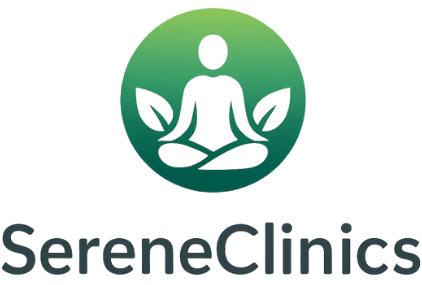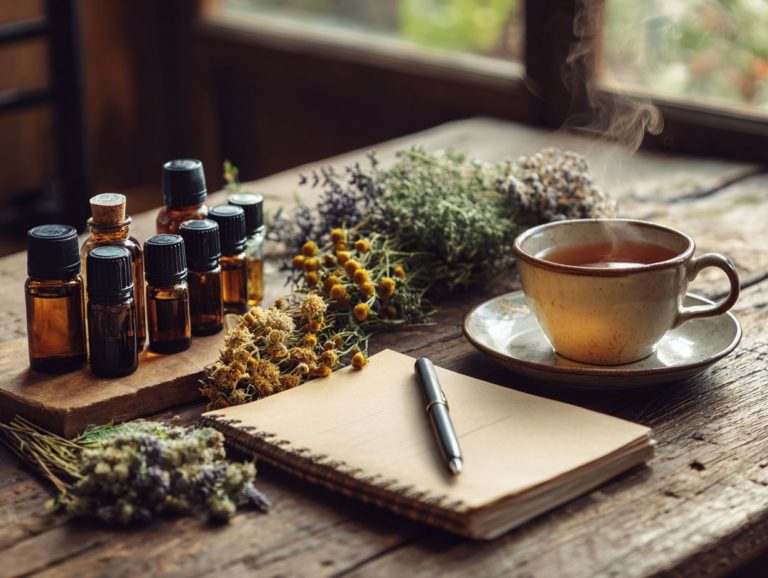How to Use Homeopathic Products: Forms and Tips
Learn how to effectively use homeopathic products with our guide on the benefits of homeopathy. Homeopathic medicines, such as granules and liquid treatments, provide a complete method for health. Although a healthcare professional can recommend homeopathy, learning to use these treatments helps you manage your own health. Get practical advice, dosage instructions, and guidance on talking with a pharmacist to improve your homeopathic experience.
Key Takeaways:
Contents
- 1 Homeopathy Usage Statistics
- 2 Forms of Homeopathic Products
- 3 Choosing the Right Homeopathic Product
- 4 How to Use Homeopathic Products
- 5 Tips for Effective Use
- 6 Common Misconceptions
- 7 Frequently Asked Questions
- 7.1 What are the different forms of homeopathic products?
- 7.2 Can I mix different forms of homeopathic products?
- 7.3 How do I take homeopathic tablets?
- 7.4 Which form of homeopathic products is best for children?
- 7.5 What should I consider when choosing homeopathic products?
- 7.6 Are there any tips for using homeopathic products?
What is Homeopathy?
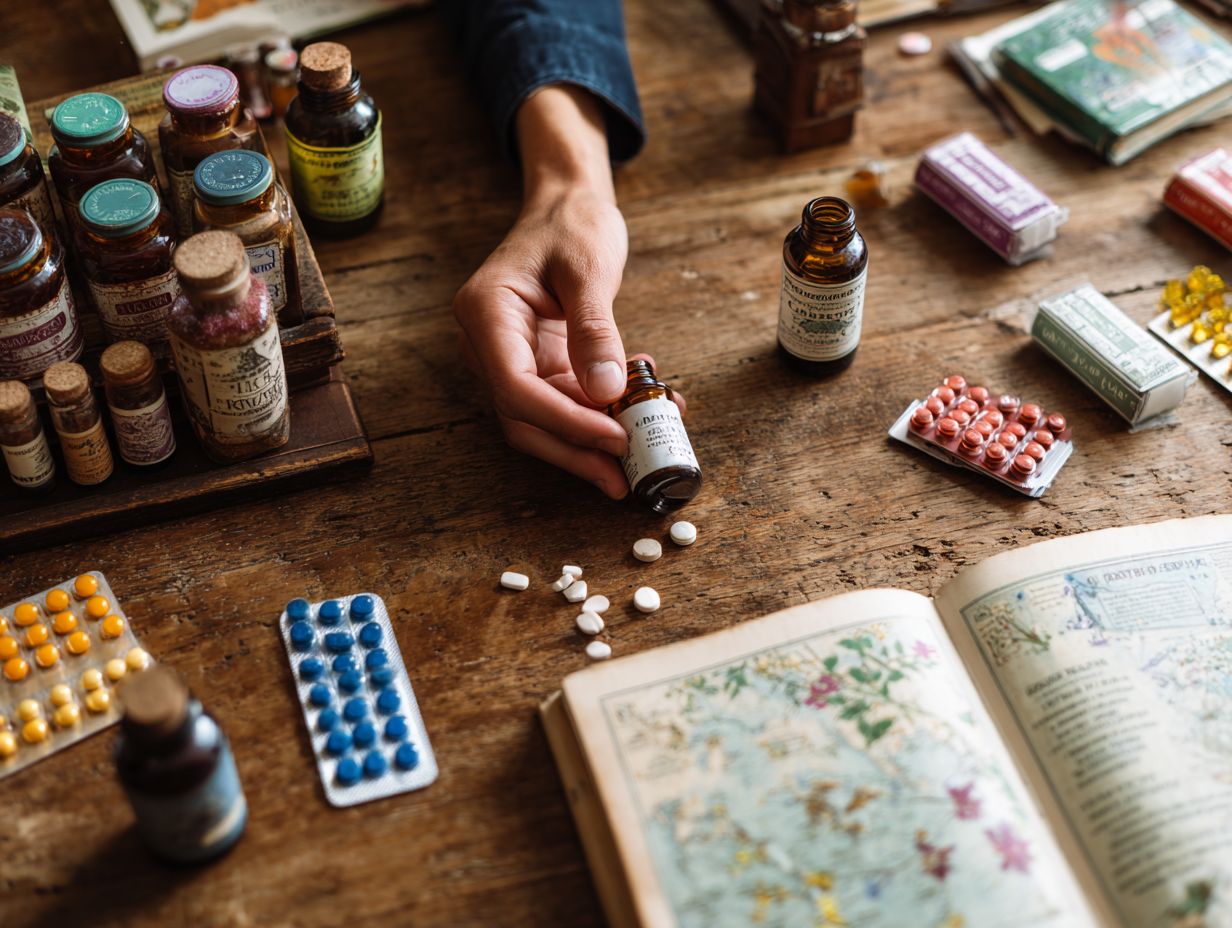
Homeopathy is based on the principle of ‘like cures like,’ where substances causing symptoms in healthy individuals are used in diluted forms to treat similar symptoms in the sick. For more detailed examples, our article on like cures like in homeopathy provides valuable insights and case studies.
Homeopathic treatments are created by diluting a substance many times and then shaking it vigorously.
Belladonna is often used for high fevers and swelling. Arnica Montana works well for bruises and sore muscles.
These remedies are made so that their active ingredients are present in extremely low doses, aiming to trigger the body’s innate healing response. Despite its popularity, recent analysis from McGill University suggests that homeopathy remains scientifically implausible.
People interested in homeopathic treatment should consult a knowledgeable practitioner to find the best remedy for their specific symptoms.
Homeopathy Usage Statistics
Homeopathy Usage Statistics
Interest in alternative medicine continues to grow, with many individuals seeking out traditional and complementary therapies. According to a chart by Statista, a significant number of people prefer alternative healing methods over conventional medicine (Chart: Many Prefer Alternative to Conventional Medicine). This trend resonates with the principles of homeopathy, which integrate traditional practices with evidence-based approaches, as seen in our [in-depth exploration of homeopathic methods](https://sereneclinics.com/holistic-health/holistic-medicine/homeopathy/homeopathy-principles-practices/).
Homeopathy Prevalence: Usage in US and Worldwide
Homeopathy Prevalence: Common Conditions Treated by Homeopathy
The Homeopathy Usage Statistics Data shows how common homeopathy is and how it is used in the United States and other countries. Homeopathy, a complementary medicine based on the principle of treating “like with like,” has been a subject of interest for its potential benefits and widespread use.
Homeopathy Prevalence in the United States indicates a modest adoption rate, with 2.1% of US adults using homeopathy as of 2012. This percentage highlights a niche but significant group interested in alternative medicine options within a healthcare system predominantly focused on conventional practices. Homeopathy is used worldwide by 200 million people, showcasing its broader acceptance and integration into health practices worldwide.
- Common Conditions Treated by Homeopathy: The data points to specific health issues where homeopathy is frequently applied. Respiratory and Otorhinolaryngology (ENT) complaints see an 18.5% treatment rate with homeopathic remedies, suggesting a preference for this approach in addressing conditions like allergies, sinusitis, and colds. Meanwhile, musculoskeletal complaints, which include ailments such as arthritis and muscle pain, are treated with homeopathy by 12.3% of users. These statistics show that people turn to homeopathy for regular, long-term, or repetitive health issues.
The data highlights homeopathy’s place as an additional choice with conventional medicine. Its global usage figure of 200 million people demonstrates a significant level of trust and reliance on homeopathic practices, particularly where conventional medicine may either be less accessible or preferred to be complemented with natural remedies. Even though homeopathy isn’t common in the US, data indicates a consistent interest in using it for specific health problems. This suggests the need for more research on its effectiveness and consideration in broader healthcare systems.
History and Principles of Homeopathy
Homeopathy, created by Samuel Hahnemann in the late 1700s, has grown through careful use of its basic ideas for over 200 years.
Hahnemann’s early findings, such as the Law of Similars, established the basis for homeopathy, and you might find it intriguing to explore [how this principle is applied in practice](https://sereneclinics.com/holistic-health/holistic-medicine/homeopathy/homeopathy-like-cures/).
Key milestones include the establishment of the first homeopathic college in 1835 in Leipzig, enhancing education in this field.
The formulation of the Homeopathic Pharmacopoeia introduced standardized remedies, while the founding of the American Institute of Homeopathy in 1844 marked a significant step in regulatory efforts. For those interested in exploring the broader historical context, this comprehensive history provided by News Medical covers the evolution and significant developments in homeopathy.
Today, homeopathy continues to be applied globally, with practitioners employing modern research and treatment techniques, such as individualized remedy selection based on patient history.
Forms of Homeopathic Products
Homeopathic products come in various forms, offering different methods of use depending on what you like.
Granules and Pellets
Granules and pellets are the most common dosage forms of homeopathic remedies, known for their ease of use and rapid absorption.
These forms typically consist of small, spherical particles made from sugar lactose or other carriers, which are prepared through a process of trituration and succussion.
For effective administration, a common dosage for adults can range from 5 to 10 granules, taken 2-3 times daily under the tongue for optimal absorption.
Popular brands like Boiron make granules the same size to keep dosing consistent, helping both practitioners and patients.
Always consult with a healthcare provider to determine the most suitable remedy and dosage for individual needs.
Liquid Remedies
Liquid homeopathic remedies allow for easy dose changes and are absorbed fast, making them suitable for people of all ages.
A popular example is Oscillococcinum, often taken to ease flu symptoms such as fever and chills. The general dosage for adults is 30 doses within 48 hours when symptoms start, with children receiving half the adult dose.
For best results, take the remedy by placing it under the tongue and letting it dissolve to absorb better.
Other treatments, such as Aconitum for fast anxiety relief and Belladonna for fevers, have particular dosing instructions to make sure they work well and are safe.
Topical Applications

Topical homeopathic applications, including ointments and creams, are designed for localized treatment of various skin conditions and injuries.
For instance, Arnica montana cream is widely used to reduce bruising and inflammation following injuries, providing quick relief and promoting recovery.
Calendula ointment, on the other hand, is excellent for soothing minor cuts and skin irritations, known for its healing properties.
Hypericum perforatum oil is effective for nerve pain and can be applied to areas experiencing discomfort.
When selecting a product, consider the specific condition you’re treating and consult a healthcare professional for the best results.
Homeopathic Ointments and Creams
Homeopathic ointments and creams combine therapeutic effects with skin-friendly ingredients, ensuring safe application for all ages.
When selecting quality homeopathic products, look for those that adhere to established homeopathic standards, such as being registered with regulatory bodies like the FDA.
Ingredients should be clearly listed and sourced from reliable suppliers. For instance, creams containing arnica for bruising or calendula for healing can provide notable relief.
It’s also beneficial to choose products free from synthetic additives and fragrances to reduce skin irritation. Always do a small test on your skin before using new ointments all over to check if it suits your skin type.
Choosing the Right Homeopathic Product
Choosing the right homeopathic product means knowing about strength, how much the product is watered down, and the specific health uses that match the patient’s needs. Understanding the principles and practices of homeopathy can help guide these choices.
Understanding Potency and Dilution
Homeopathic potencies refer to the level of dilution and energy imparted to a substance, influencing its therapeutic effects.
The two common potency scales are the C scale (centesimal) and the X scale (decimal). For instance, a 30C potency indicates a substance has been diluted 1:100 thirty times, while a 200C potency signifies a 1:100 dilution repeated 200 times.
This significant thinning alters the remedy’s energy pattern. When choosing a remedy, practitioners might suggest 30C for acute conditions, such as a cold, and 200C for chronic issues, like anxiety, reflecting the need for deeper action.
Remedies like Arnica montana are often prescribed at lower potencies for bruising, while higher potencies may be used for long-term emotional imbalance.
Identifying Symptoms for Treatment
Correctly identifying symptoms is important for successful homeopathic treatment, helping practitioners choose the best remedies.
To spot symptoms clearly, doctors often use detailed questionnaires that let patients fully describe their experiences. For example, using the ‘Repertory of Homeopathic Materia Medica’ can help explain specific symptoms and their details.
It’s important to talk openly about what you do each day, how you feel, and any physical feelings to better understand your situation. Professional homeopaths review this information and match the symptoms to suitable treatments like Arsenicum album for anxiety or Pulsatilla for mood swings, creating a treatment plan specific to the individual.
How to Use Homeopathic Products
Using homeopathic products correctly makes them work better, helping patients get the right treatment for their needs.
Dosage Guidelines
Dosage guidelines in homeopathy are individualized, often requiring consultation with healthcare professionals to determine optimal amounts.
For common remedies, Natrum Muriaticum is generally dosed at 30C for adults, up to three times daily for acute conditions, while children might require 200C, taken once daily for specific issues like headaches.
Belladonna is recommended at 30C strength. Adults typically take one tablet every two hours when fever rises, while children take half a tablet.
The amount of medicine a person needs depends on how bad the symptoms are, their age, and their overall health. It’s important to get advice from a qualified practitioner that suits individual needs.
Timing and Frequency of Doses
The timing and frequency of doses greatly affect how well homeopathic treatments work, stressing the importance of customized methods.
To get the best results, take remedies at least 30 minutes before eating or two hours after meals. This allows the medicine to be absorbed effectively without interference from food.
For example, if someone is using a treatment for anxiety, they may take it in the morning when they wake up and again in the afternoon or evening if their symptoms become more intense.
Sticking to a regular schedule can improve results-patients should take their doses at the same times daily, adjusting for their individual needs and changes in symptoms.
Combining Remedies
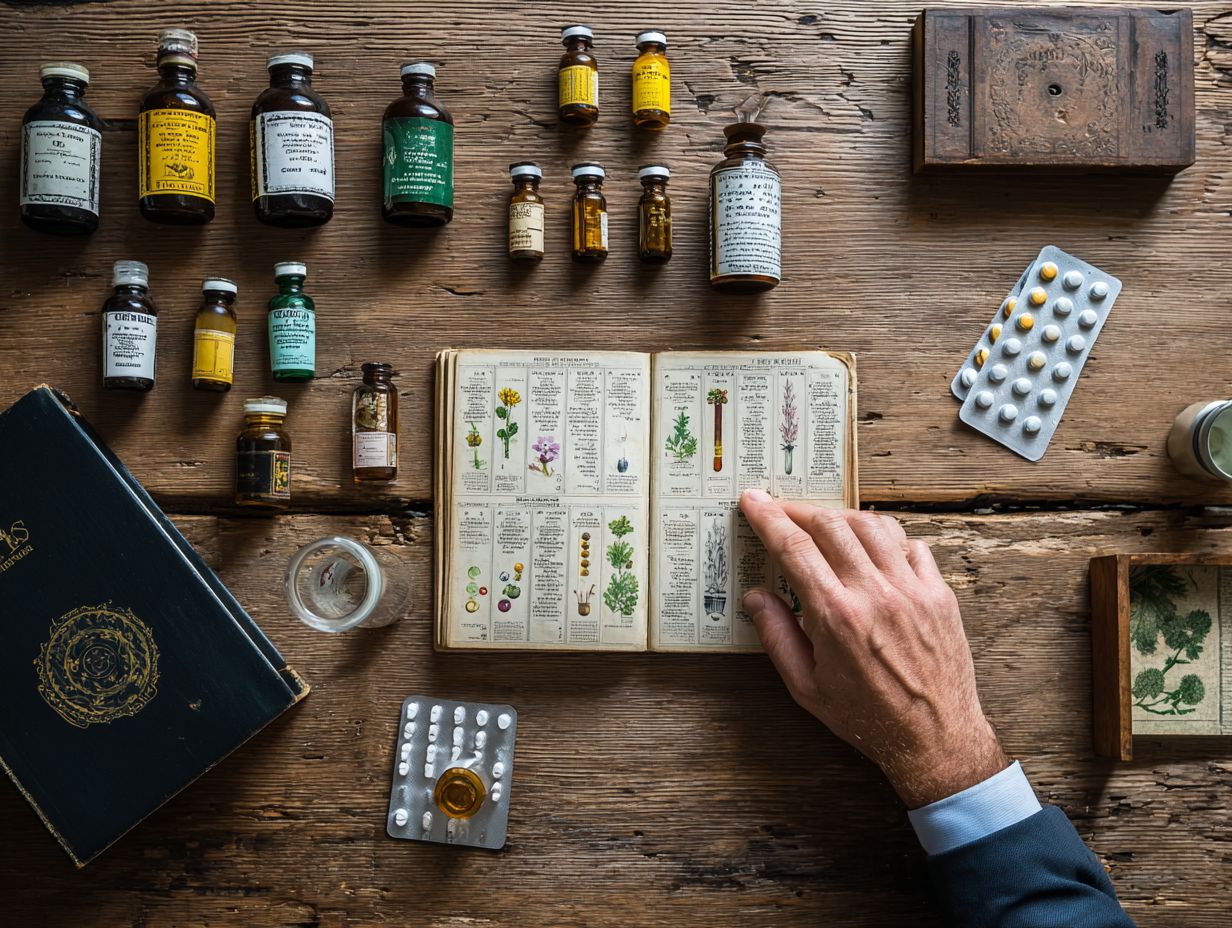
Mixing homeopathic remedies can improve treatment results, but it should be done cautiously to prevent any issues.
Start with well-known combinations like using Aconite when cold symptoms start, and Belladonna for fever or agitation.
For allergies, consider mixing Allium Cepa for runny nose with Sabadilla for sneezing.
It’s important to use remedies at different strengths; for example, use a 30C strength for Aconite and a 6C strength for Belladonna to prevent interactions.
Always talk to a homeopathic practitioner to get advice that fits your symptoms.
Tips for Effective Use
Using homeopathic products effectively requires regular evaluation and working with healthcare providers to change treatments when necessary.
Consulting with a Homeopathic Practitioner
Talking to a professional homeopath helps make sure treatments match each patient’s needs and improve how well homeopathic remedies work.
To choose a qualified homeopath, consider their credentials and experience. Look for practitioners accredited by organizations like the National Center for Homeopathy.
During your consultation, expect a thorough assessment – you will discuss your health history, lifestyle, and specific health concerns. To maximize the appointment’s effectiveness, prepare a list of your symptoms, medications, and any previous treatments you’ve tried.
Having specific goals for your homeopathic treatment can help your practitioner create a more customized plan for you.
Monitoring and Adjusting Treatment
Regular monitoring of treatment effectiveness is critical in homeopathy, allowing for timely adjustments to maximize therapeutic benefits.
To effectively track progress, maintain a symptom diary where patients log daily symptoms, noticeable changes, and any side effects encountered. This data is very helpful during follow-up consultations, helping doctors check how treatments are working.
Holding these meetings on a regular schedule-beginning every week and then shifting to every two weeks or monthly as needed-maintains communication. Change doses or treatments based on the information collected during these sessions, as patient opinions are important for individual care.
This repeated method leads to a more flexible treatment plan, improving overall results.
Storing Homeopathic Remedies
Proper storage of homeopathic remedies is essential to maintain their potency and efficacy over time.
To keep your homeopathic remedies working well, store them in a cool, dark area, away from sunlight and moisture. Ideal storage conditions include a temperature range of 59 degreesF to 77 degreesF (15 degreesC to 25 degreesC).
Avoid placing them in medicine cabinets above stoves or sinks, where heat and humidity can fluctuate. Use opaque containers to further shield them from light exposure.
Keep remedies away from strong odors and electromagnetic fields, such as those from microwaves or phones, to prevent any degradation.
Common Misconceptions
Homeopathy can be beneficial, but misunderstandings may make patients unsure and puzzled.
Homeopathy vs. Conventional Medicine
The debate between homeopathy and conventional medicine often arises from differences in treatment philosophy and evidence of efficacy.
Traditional medicine is based on science, using thorough testing through clinical trials to confirm safety and how well it works. For instance, antibiotics are prescribed to treat bacterial infections based on extensive research.
In contrast, homeopathy operates on the principle of ‘like cures like’ and often uses highly diluted substances, such as arnica for bruises. Critics argue that many homeopathic treatments lack empirical support, while proponents may cite anecdotal success stories.
The decision between these methods usually depends on individual opinions and particular health requirements. It’s important to talk with healthcare experts.
Safety and Side Effects
Homeopathic treatments are usually seen as safe and tend to have few side effects. This makes them popular for many people, including pregnant women and babies.
Research indicates that homeopathic treatments have a lower incidence of adverse effects compared to conventional medications. A review in the British Homeopathic Journal showed that less than 5% of people reported side effects from homeopathic treatments, compared to up to 25% with standard medicines.
To stay safe, people at risk should talk to a qualified homeopath, especially about how much medicine to take and how long to use it. Keeping a journal to track any reactions can help monitor effects over time.
Final Thoughts on Homeopathic Practices
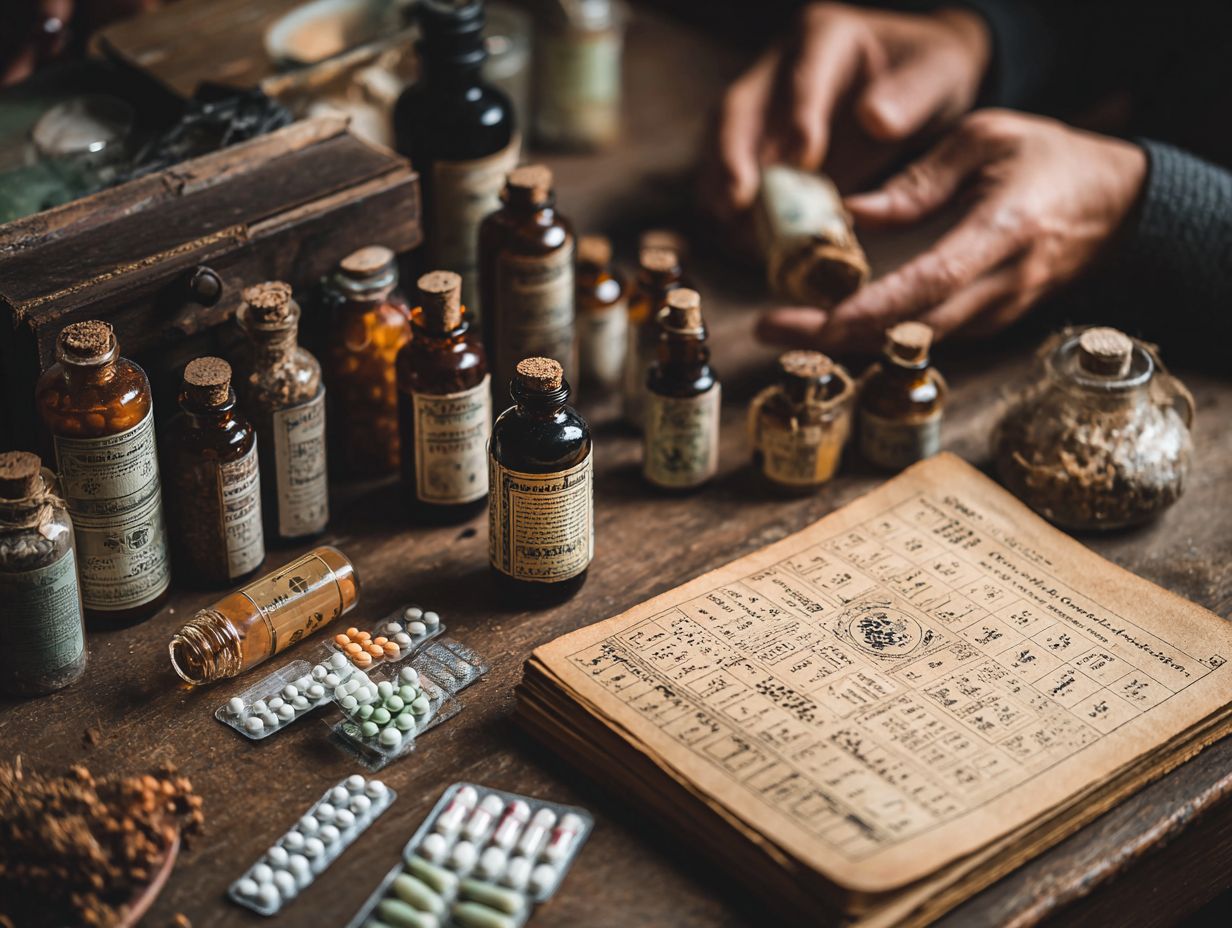
Final thoughts on homeopathic practices highlight the need for personal treatment plans and clear communication with doctors.
To completely accept homeopathy, patients should take some practical actions.
- Begin by consulting a qualified homeopath who can assess your unique symptoms and health background.
- Use trusted resources or websites like the National Center for Homeopathy to help locate certified practitioners.
- Engage in regular discussions about your treatment progress, adjusting remedies as necessary based on your response.
- Write down your symptoms to notice any changes, as this can provide helpful information during appointments.
Homeopathy and regular medicine both help improve health, giving patients a helpful choice in overall care.
Resources for Further Learning
There are many materials available for people who want to learn more about homeopathy and how to use it effectively.
For thorough learning, consider these best resources:
- “The Homeopathic Workbook” by J. P. Simpkin provides a hands-on approach to practice.
- Websites like the National Center for Homeopathy offer articles and online courses.
- The Homeopathy Research Institute focuses on scientific studies.
- Joining the Homeopathic Medical Association can also connect you with professionals and ongoing events.
Using these materials will greatly improve your theoretical knowledge and hands-on skills in homeopathy.
Frequently Asked Questions
What are the different forms of homeopathic products?
Homeopathic products come in various forms such as tablets, liquids, ointments, and pellets. These forms make it easy to use the products according to your needs and preferences.
Can I mix different forms of homeopathic products?
It is not recommended to mix different forms of homeopathic products as it may affect the effectiveness of the remedy. It is best to stick to one form at a time.
How do I take homeopathic tablets?
Homeopathic tablets should be dissolved under the tongue for best results. Do not swallow them whole as this may affect the absorption of the remedy.
Which form of homeopathic products is best for children?
For kids, homeopathic pellets are the most popular form as they are usually small and easy to administer. Liquid forms can also be effective, especially for infants.
What should I consider when choosing homeopathic products?
It is important to consult with a certified homeopath or healthcare professional to determine the best product and potency for your specific needs. Also, make sure to choose products from reliable and reputable brands.
Are there any tips for using homeopathic products?
Some suggestions for using homeopathic products include not consuming strong flavors like mint or coffee before and after taking the remedy, not handling the tablets with your hands, and keeping them away from strong smells or extreme temperatures.

Sheetal Sharda has a background in CS. She got an interest in Holistic living back in 2018, and has since started exploring more into Naturapathy, Holistic Living, Yoga, and more. She got inspired to start SereneClinics to help people find reliable centers across the world.
